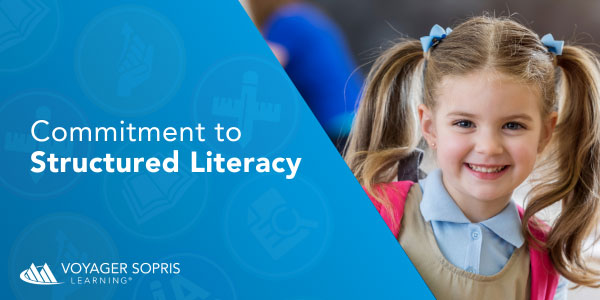New Mexico Makes Commitment to Science of Reading-Based Literacy Instruction
In 2019, The New Mexico Public Education Department (NMPED) adopted a Structured Literacy initiative based on the science of reading as the approach to literacy instruction statewide. NMPED leaders believe literacy is a fundamental civil right, so they are investing in evidence-based reading instruction, professional development, high-quality reading resources, and ongoing support to ensure all students can read, write, and speak with confidence.
NMPED applied for and received a $40 million Comprehensive Literacy State Development Grant (CLSD) from the U.S. Department of Education. The overall goal of the grant is to significantly increase the percentage of elementary, middle, and high school students in meeting state language and literacy standards, especially those students from underserved communities.
Work done to date by grantees includes:
- Purchasing and implementing evidence-based rigorous curriculum for K–12 English/Language Arts courses
- Increasing reading intervention teachers so all students can be supported to learn to read
- Providing ample and high-quality professional development opportunities for teachers through training and coaching
- Developing programs, events, and activities for families to engage in school and learning

Commitment to Structured Literacy
The New Mexico Statewide Literacy Framework was published in 2020. It provides guidance for a comprehensive literacy system to build, implement, and strengthen literacy instruction across the state. It addresses achievement gaps by developing evidence-based practices based on the science of reading and a sense of urgency around literacy.
The literacy framework expands the definition of literacy beyond reading to include writing, listening, and speaking in these ways:
- The integration of listening, speaking, writing, and critical thinking across all media types
- The knowledge to recognize and use language appropriate to a situation
- The ability to think, create, question, solve problems, and reflect
This framework is a road map for reading instruction that is well-designed, implemented, and evaluated from kindergarten through 12th grade. As part of the statewide commitment to Structured Literacy, all early childhood and literacy teachers and administrators must complete Lexia® LETRS® (Language Essentials for Teachers of Reading and Spelling)—a professional development program based on the science of reading and Structured Literacy. Thousands of New Mexico teachers have now completed LETRS training and are using rigorous methods of instruction every day in classrooms across the state.
The Statewide Literacy Framework defines the stages of reading development as a continuum of progress for readers. These stages are based on students’ experience not their age or grade levels:
- Emergent readers need enriching, enjoyable, and frequent experiences with books, especially picture books
- Early readers can discuss the background of the story to better understand the actions in the story and message the story carries
- Traditional readers often like to read books in a series as a comprehension strategy; the shared characters, settings, and events support their reading development
- Fluent readers are confident in their understanding of text and how text works, and they are reading independently
LETRS-trained literacy educators understand systematic and explicit instruction is required for successful literacy outcomes. They also champion the importance of reading practice to create a strong foundation for reading.
This supplemental literacy program is aligned with LETRS and provides systematic practice for early readers:
LINKS to Literacy is an explicit, systematic reading intervention designed for shorter timeframes like summer school, tutoring, or intersessions. Create the LINKS to grade-level success! |
